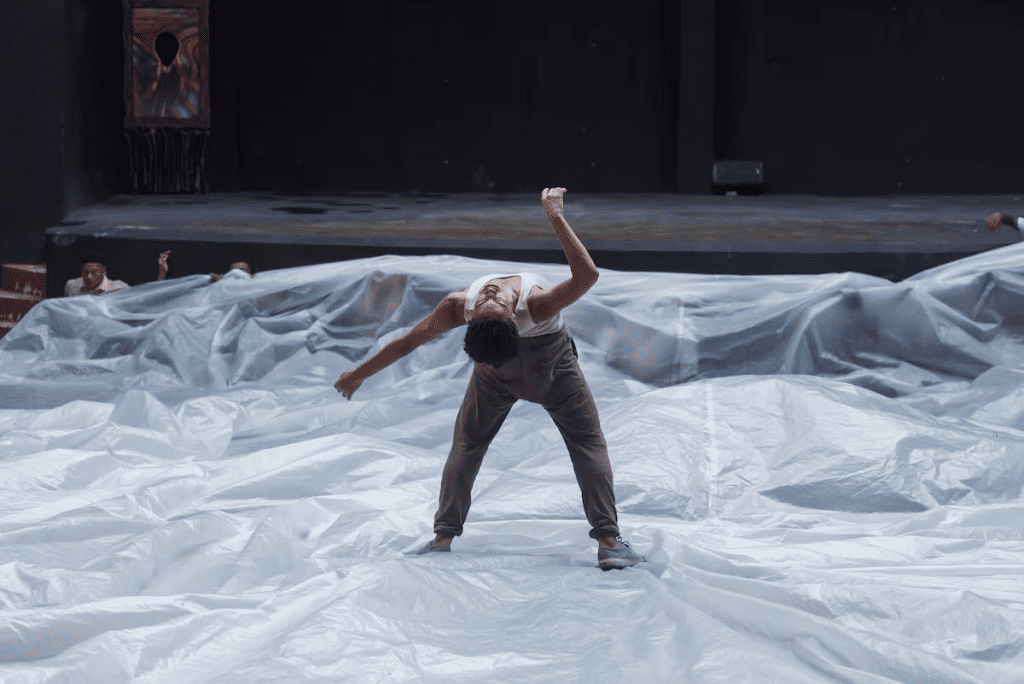In the historic centre of Panama City, where the narrow alleys and colorful walls of the San Felipe neighborhood hold stories of struggle, resilience, and social stigma, one space shines with its own light. The faint rays of the sun peeking out after a drizzle on a Saturday afternoon illuminate a modest white building rising up along a street that seems to mimic a coin.
In the mornings, cars surround it, and at night, the building becomes the setting for street vendors selling hot dogs or skewered meat and long lines of people seeking a fun night out at one of the many nearby nightclubs.
Despite the slippery floor from the accumulated water, a small, excited girl runs and climbs to the top of the building, where a dance class awaits her.
In many neighborhoods across the country, daily life is a constant struggle between a lack of opportunities and the desire to break vicious cycles. According to data from the Public Ministry, 2023 was one of the most violent years in the last decade: 556 people were murdered, a 10% increase from the previous year.
In this context, the Fundación Espacio Creativo, or FEC, has become a refuge of hope and a springboard for those children who might otherwise have been lost in the statistics of poverty and violence.
Photo courtesy FEC/Alegre Saporta, via The Human Journalism Network.
In a vast rehearsal room, more than 40 children came despite the rain and practiced a few choreography steps in palpable concentration. While some demonstrated what they had just learned, others waited eagerly for their turn to dance.
The music, a delicate but persistent rhythm, fills the space, but beyond the precision, what really stands out is the commitment of the young dancers.
At the end of each group’s turn, applause from the audience serves as motivation for the effort of the likely future artists.
“Now, everyone!” shouts Jonathan, one of the instructors who also controls the music playback.
With great energy, the children on the sidelines jump up and rush to the centre of the room. The children in the stands, eager for attention, attempt to leap down from the highest steps. Their instructors, ensuring safety, ask them to come down calmly. They comply, of course, but at a slower pace. Their bodies were shouting, I want to dance now!
The music begins once everyone is in position and the final instructions are given. In unison, they start by raising their right arm, then their left, continuing with each small movement that forms the choreography.
As they dance, their faces reflect their desire to do well. Several make mistakes but quickly try to follow one of their peers to continue with the routine. At the end, the group leaves the room through two doors, not without first receiving applause and farewells from the instructors.
One of the young girls who had made a mistake during the routine stayed in the room, interested in attending a future class. That simple decision could be the factor that changed her life forever.
“Dance also gives them the opportunity to reconnect with their emotions. (…) Because it is a space where they can explore their personality,” said Ángela Florez, director of the FEC, who believes that art represents the possibility of a new way of living, away from violence and despair, like the success story of Jaime.
Jaime grew up in the narrow alleys of Santa Ana, destined to live with the stigma heard on the streets about the few opportunities available to the residents of this popular neighborhood.
However, thanks to discipline, effort, and talent, dance took him to study in Barcelona and later in Italy. Now, in Panama, he teaches other young people in the same room where he once discovered his passion.
For Jaime, dance was not only a professional opportunity but also a way to escape the temptations that often lead young people in his community to make poor decisions, like dropping out of school.
In 2023, 9,145 students dropped out of the educational system from a registered enrollment of 706,537 students. This figure reflects that 1.3% of students disconnected from their studies and left school.
But Jaime is not the only one. There is also the case of Valentina, a young migrant from South America who arrived as a child. Her family life was complicated due to limited subsistence resources and the bureaucratic and costly process of migration regularisation. But she found a way to relieve some of that burden through dance.
She discovered that through movement, she could express what she could not with words. Moreover, it was through dance that she found her passion in life and what she would like to pursue professionally. Today, Valentina is about to graduate as a physiotherapist, an achievement that seemed unattainable from her reality.
With each success story, FEC demonstrates that art, education, and proper support can change lives. What started as a small initiative has become a model of social intervention that has transformed hundreds of young people.
The unleashing of creativity and expression through art will continue to be that beacon of hope shining in each child’s heart at FEC and lighting the path for future generations.
This story was originally published in La Prensa (Panamá) and is republished within the Human Journalism Network program, supported by the ICFJ, International Center for Journalists.
Source link : http://www.bing.com/news/apiclick.aspx?ref=FexRss&aid=&tid=66eed8ed0a3840ddacaeefc7dccc9832&url=https%3A%2F%2Fscroll.in%2Farticle%2F1073389%2Fin-panama-neighbourhood-dance-is-a-ray-of-hope-for-children-caught-in-cycle-of-poverty-and-strife&c=7944579973778009770&mkt=en-us
Author :
Publish date : 2024-09-21 03:00:00
Copyright for syndicated content belongs to the linked Source.
